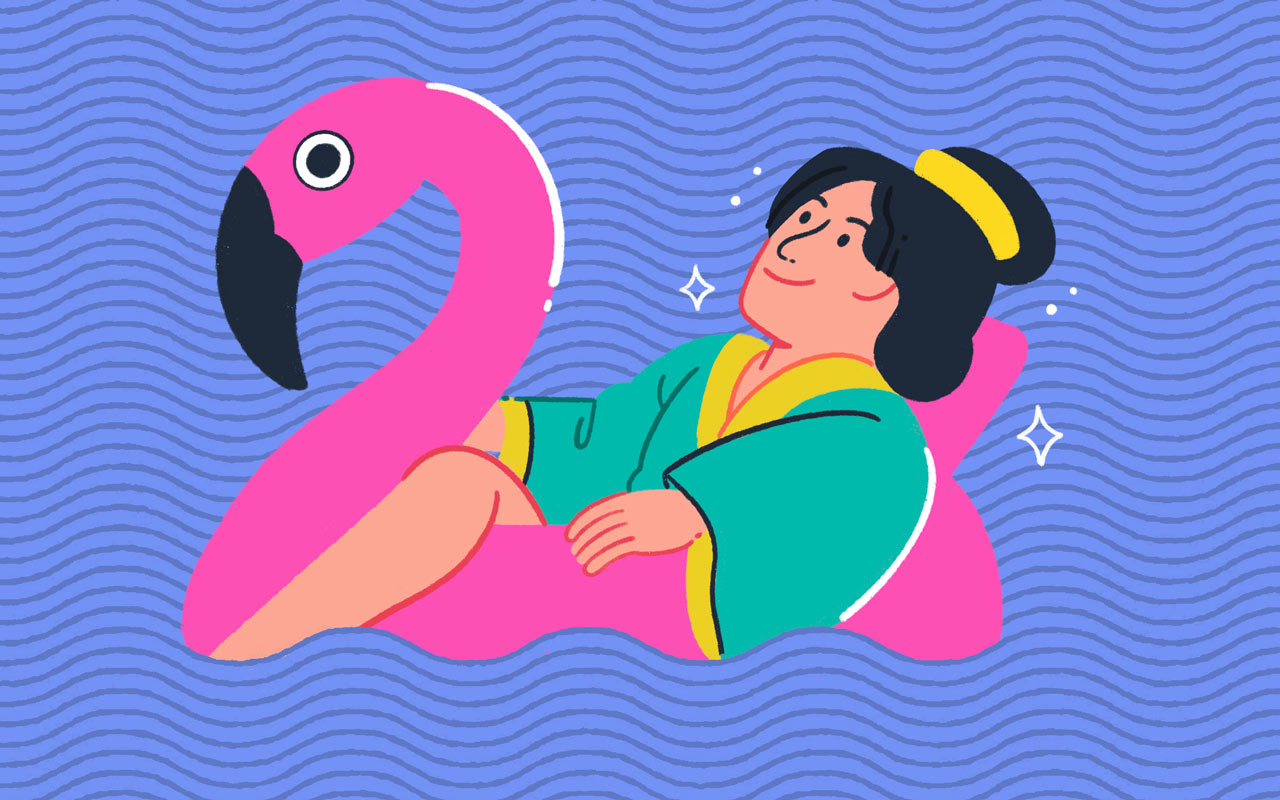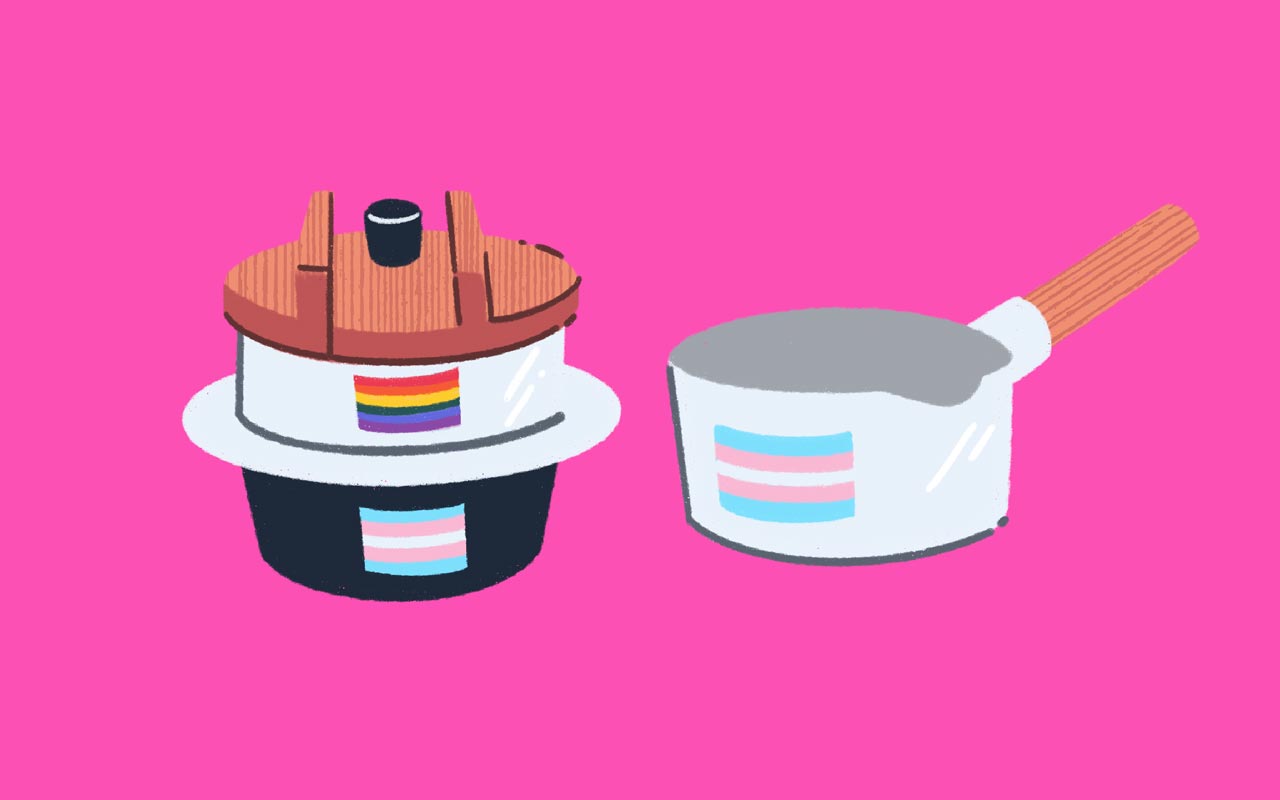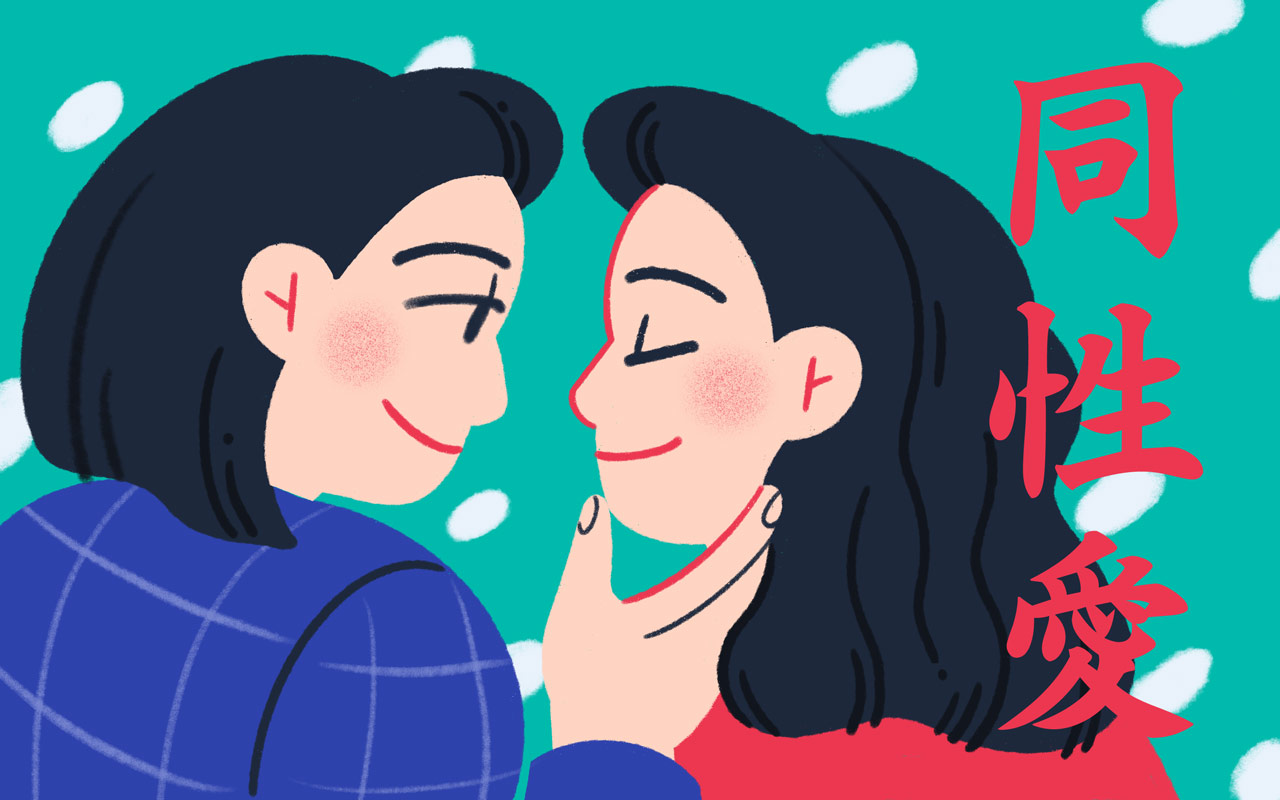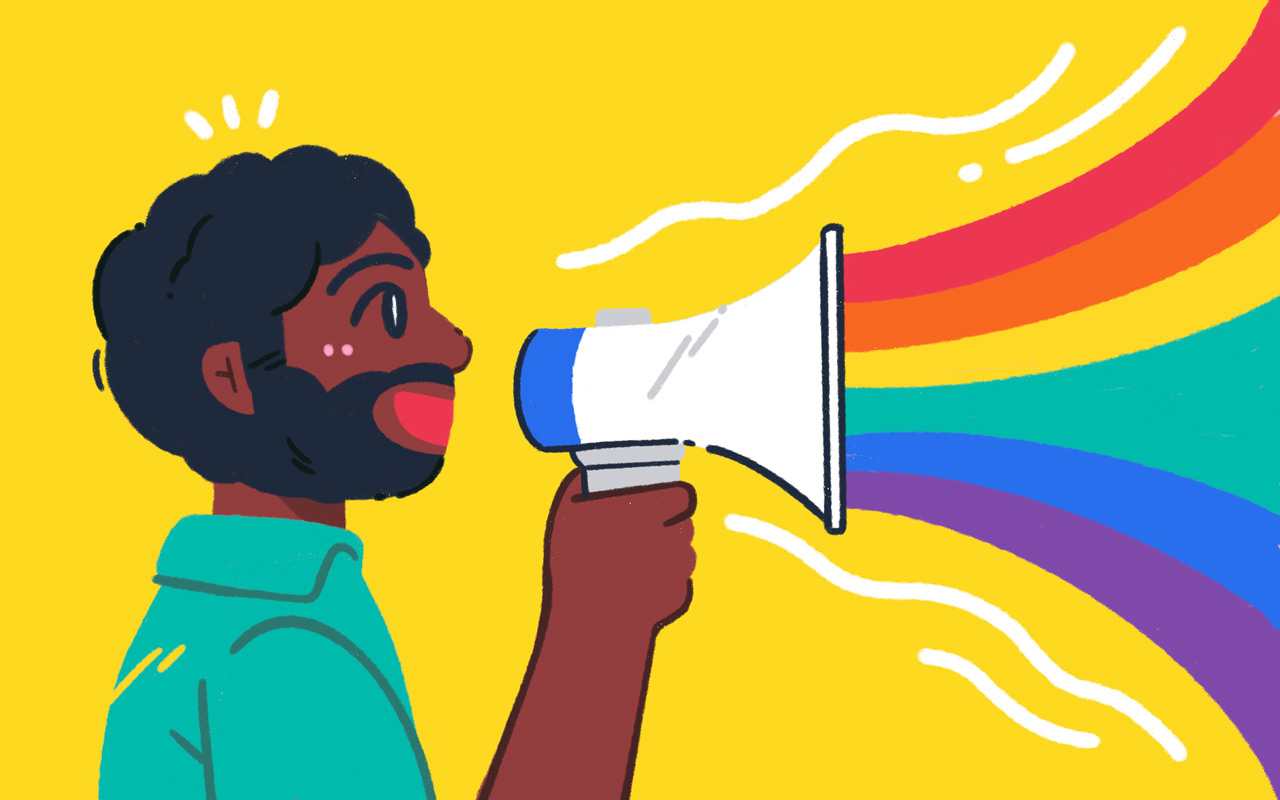It's safe to say that most learners of Japanese hope to experience life in Japan someday. Whether it's for a temporary stay or something more permanent, one of the most fascinating things about living in a foreign country is the way you experience a shift in identity. For one, your national identity becomes more salient than ever before. Paradoxically, it also becomes less salient, as you find yourself in the loosely-defined category of "foreigner." Based on your outward appearance, you might present as part of the minority or the majority, and the privileges or discrimination you experience in your home country may shift or take on new meanings.
While we could probably write dozens of articles about the identity topics above, this article is going to focus on less visible identities — those of the LGBTQ+ community. Unlike identities related to your country of origin or ethnic background, queer identities often have to be revealed in order to be recognized. This poses a problem for queer learners of Japanese. How do I come out in Japanese? If I choose to come out, do I know the right words to make myself understood? The first time I came out to someone in Japan, I was asked if I often wear a dress. While the question surprised me, it also taught me a valuable lesson. My cultural understanding of words like "gay" might not be the same as everyone else's, especially in the context of an entirely different country.
In this article, we will introduce you to queer identity terms in Japanese, by placing them in a historical and cultural context. As you encounter and use these words in real life, you'll be able to understand their subtleties and nuances, and if you are queer yourself, you'll be able to use them to express your own identity in Japanese.
Disclaimer: This article is intended to inform learners of Japanese about the terms that exist in the Japanese language to describe queer identities. Due to the breadth of terms that exist, and the dynamic nature of queer culture, we were unable to cover everything. Some of the terms introduced can be derogatory, and when translated into English, they may be upsetting to some readers. However, we believe that it is empowering for LGBTQ+ learners to have knowledge of these terms, so they can understand the meaning when they are encountered. The purpose of this article is not to educate anyone on gender or sexuality, but rather to help queer individuals who wish to visit Japan navigate their expression of identity.
- The Floating, Pansexual World
- Call Me by Your Kitchenware
- Erotic Grotesque Nonsense
- Sexual Orientation
- Gender Identity
- Coming Out in Japan
The Floating, Pansexual World

Let's begin our exploration of queer identity terms at the very beginning — pre-modern Japan. If I had to describe how people viewed sexuality at the time with one word, it would be this: pansexual. I'm not saying that all Japanese people were attracted to all genders, what I'm saying is that love and sex between all genders, even the non-conforming ones, was not considered abnormal or an aberration. From what I can tell, sexuality was understood as something you do, not something you are. For example, 男色 (nanshoku) or "male-male love" was practiced by the samurai, and it did not exclude them from also partaking in 女色 (joshoku) or "male-female love." Love between women is alluded to in some pre-modern texts, but the lack of a widely-recognized term for "female-female love" does suggest that it was not given much social acknowledgement — evidence that while it was a time of sexual liberation, that did not translate into gender equality.
Love and sex between all genders, even the non-conforming ones, was not considered abnormal or an aberration.
Japan experienced newfound stability during the Edo Period (early 1600s–late 1800s), and many industries flourished. Theater, dining, and venues of relaxation sprang up, and became a haven for gender non-conforming people to make a living. This realm of entertainment was known as 浮世 (ukiyo) "the floating world," an homage to its laissez-faire, anything-goes attitude. Kabuki theater became closely associated with gender non-conforming folks, since women were banned from acting in Kabuki, leading to male-bodied people dressing as women to play their roles. Known as 女形 (onnagata), these actors were selected for their youth and feminine beauty, and were often the object of sexual pursuit by both male and female admirers.
Compared to the West, this historical openness towards sex and gender is pretty remarkable, and has some important consequences for modern Japanese society. First of all, the relative tolerance of gender non-conforming people means that there has been very little aggressive persecution of queer people in Japan. Not to mention, queer TV personalities, like drag queen Matsuko Deluxe and transgender entertainer Haruna Ai, are widely popular — seemingly an echo of the appreciation for onnagata in the theater.
Call Me by Your Kitchenware

Now that the stage is set, we're ready to bring out the first act of Japanese queer identity terms. This first set of terms is indigenous to Japan, and finds its roots in the Edo Period "floating world" scene.
おかま ・ okama ・ "rice pot"
When written in kanji, お釜 (okama) literally means "rice pot," but in the Edo Period it was used to refer to someone who is the passive recipient of anal sex. Some say the word comes from a comparison between the shape of a pot and the roundness of a booty (apparently もも was already taken 🍑😂). Others also point out its phonetic similarity to the Edo Period word 陰間 (kagema) "in the shadows," which referred to apprentice Kabuki actors, who could be found offstage and were often available to theatergoers for prostitution. It's likely that okama began as a crass slang term for kagema.
Okama is still widely used today, both as a self-referential identity term, and as a slur. As you can imagine, calling someone okama can be a total insult, as it reduces someone's entire identity down to a sex act. However, the term is also thrown about to refer to effeminate (usually gay) men, drag queens, and trans women, and not necessarily in derogatory ways. Within the queer community, many people consider it reclaimed and use it jokingly amongst other queer friends, similarly to how some gay English speakers might call their friends "queens." There are also some within the queer community, mostly in older generations, who prefer the term okama over Western alternatives.
おなべ ・ onabe ・ "cooking pan"
Written in kanji, お鍋 (onabe) literally means "cooking pan," but it can also be used to refer to female-born people who live their lives as men. While the word can certainly be seen as an extension of the okama metaphor, some have also pointed out that onabe is an Edo Period term for female servants, and this might be another source of its use as a queer identity term.
The fact that this use of onabe probably originated in the queer community may explain why it is not considered to be as potentially derogatory as okama. For English speakers, this term can also be confusing, since it seems to have a lot of overlap with other identity terms, particularly transgender. There are countless publications that try to establish boundaries between butch lesbians, onabe, and transgender men, but there is little agreement on where to draw the line. The truth is that these terms mean different things to different people, and the best thing to do is honor what onabe means to the individuals who use it.
おこげ ・ okoge ・ "burnt rice stuck on the pot"
The last term in this metaphorical set is okoge. When written in kanji, お焦げ (okoge) refers to the burnt rice that sticks to the inside of a rice pot. As an extension of the okama metaphor, okoge refers to women who enjoy the company of gay men, akin to "fag hag" or "fruit fly" in English. While okama and onabe are known throughout mainstream Japanese society, okoge is less well-known, and usually only used within the queer community.
Erotic Grotesque Nonsense
To set the stage for our next round of queer terms, we'll need to visit the early 1900s. During this time, Japan entered an era of industrialization, driven by intentional and expansive borrowing of technology and ideology from the West. Sexology, a pseudoscientific study of human sexuality, took hold in the Japanese medical community, resulting in same-sex love being designated as an abnormality. For the first time in Japanese history, sexual practices began to be labeled as either 正常 (seijō) "normal" or 変態 (hentai) "abnormal."
However, this new way of understanding sexuality made it all the more fascinating, and a new genre of literature and art centered around the exploration of hentai took Japan by storm. Popularly known by the buzzphrase エロ・グロ・ナンセンス (Erotic Grotesque Nonsense), these publications dealt with all kinds of "perverse" sexual information. Not surprisingly, same-sex love and attraction fell into this category of perverse, or hentai.
変態 ・ hentai ・ "abnormal, kinky"
While it's not really a queer identity term, it's worth spending a bit of time talking about hentai. It is a familiar word to many English speakers, and conjures up images of bizarre anime or manga pornography. In Japanese, though, hentai does not refer to a genre of porn. It is often translated as "perverse" or "pervert" in English, but the Japanese word does not necessarily carry as negative a connotation as its English counterparts. Hentai is a catch-all word to describe something that is sexually strange or outlandish. While it can and has been used to describe homosexual activity, today hentai has a much more heterosexual nuance, and for Japanese speakers it calls to mind fetish and kink.
Hentai is also the most probable origin of a common colloquialism for "sex" in Japanese, エッチ (etchi), which is the Japanese way of pronouncing the letter "H." Etchi came into use in the 1950s, and referred only to hentai types of sex and sexuality, but it has since been used to refer to just about anything sexual. Today, エッチする (etchi suru) "to do H" is a common and way to say "have sex," since it is seen as being a little less direct and more euphemistic than other options.
同性愛 ・ dōseiai ・ "homosexuality"
In the 1920s, dōseiai (literally meaning "same-sex love") began to appear in academic texts as a translation of the Western concept of "homosexuality." This term could be applied to both male-male relationships and female-female ones, so for the first time in Japanese history, there were linguistic tools for talking about the love between two women. In fact, due to the romantic connotation of the kanji for love, 愛 (ai), that existed at the time, dōseiai was originally more closely associated with female-female relationships. The love between two women was imagined to be more emotional than male-male relationships, which were believed to be more erotic in nature. This nuance existed only in hentai literature of the time, and dōseiai is now used to mean both male-male and female-female relationships without distinction.
Today, dōseiai is still the most common translation for homosexuality. You'll often see it with a character for "person" 者 (sha) added on to the end, to form the word 同性愛者 (dōseiaisha) "homosexual person." Just like its English counterpart, dōseiaisha has a somewhat clinical feel, and you're more likely to come across it in writing or formal situations than in daily life.

Sexual Orientation
This next set of queer identity terms we'll look at deal with sexual orientation — 性的指向 (seiteki shikō) in Japanese. Interestingly, the shikō part of the word can also be written as 嗜好, changing the meaning from "orientation" to "preference." There is a lot of confusion around these two words given that they have the same pronunciation, but 指向 is the preferred term by the LBGTQ community, since it implies that sexual orientation is an inborn trait, rather than a preference or choice.
指向 is the preferred term by the LBGTQ community, since it implies that sexual orientation is an inborn trait, rather than a preference or choice.
The concept of sexual orientation entered Japan in the postwar era. It was during this time that the Japanese queer community began to look more like it does today. The influx of American troops during the postwar occupation brought with it the terms "gay" and "lesbian," and Shinjuku Ni-chome, the world-famous gay town of Tokyo, began to flourish.
ゲイ ・ gei ・ "gay"
When gei first entered the Japanese language around the 1950s, it was used to refer to the burgeoning new queer nightlife scene, as well as the people who worked there. Workers in these gei establishments performed in drag, and in some cases, lived as women full-time. The gender-conforming male clientele that visited these bars and clubs were known as homo, to distinguish themselves from the more gender-fluid gei identity.
Over the years, homo picked up an association with sexually graphic media content, so it has fallen out of favor, and made room for gei to become the most popular term. For people in the queer community, gei is no longer associated with its original gender-fluid meaning, and is now used in pretty much the same way as it is in America. However, in Japanese society at large, awareness about what gei means is still limited at times, and you may encounter people who think of it as synonymous with okama.
レズビアン ・ rezubian ・ "lesbian"
Long before rezubian came to be used in the English sense around the 1970s, it developed an unfortunate connotation with sexual media appealing to heterosexual men. The abbreviated form, rezu, is particularly associated with these hyper-sexualized images. Today, thanks to the work of lesbian activists, rezubian has been more or less reclaimed to mean something on a par with "lesbian" in English, and is used widely. However, for people who are less aware of the queer community, it may still conjure up images of sexual media.
Due to this association with pornographic content, a few alternative identity terms have emerged for lesbian women. Another abbreviation, bian, came about in the 1990s as an alternative to the more derogatory rezu, and is seen as somewhat political, or activist. Some younger women are beginning to use 百合 (yuri), meaning "lily" to refer to same-sex relationships between women. This term comes from the world of manga, and is the name of a genre that focuses on female-female relationships. Yuri remains quite limited in use to avid consumers of manga, but it's possible that this term will find wider use in the queer community at large.
バイセクシャル ・ baisekusharu ・ "bisexual"
For those who identify as bisexual, there are a few identity term options. The English loanword バイセクシャル (baisekusharu) is common, and its abbreviated form バイ (bai) is too. 両刀使い (ryōtōdzukai) "user of two swords" is another common way to reference bisexuality. This term can be used to refer to a variety of "doubly skilled" people, such as a person who speaks two languages well, or even to refer to someone who likes both sweet and spicy food. There is also the more clinical sounding 両性愛 (ryōseiai) "both-sex love," but this is considerably less common in everyday life. For people who identify as pansexual, the loanword パンセクシャル (pansekusharu) is used, as well is the Japanese term 全性愛 (zenseiai) "all-sex love," but similarly to in English, these words are not widely understood by the general public.
ノンケ ・ nonke ・ "straight"
Since we're dealing with sexual orientation in this section, it makes sense to introduce nonke. There are a few different ways to say "straight" in Japanese, but nonke is the most common within the queer community. There are two theories about its etymology, but they both share something in common. The ノン (non) at the beginning of the word is said to come from the English prefix non-. Nailing down where ケ (ke) comes from is a little trickier. Some say that it is a shortening of ゲイ (gei), and I must confess that I have always assumed this to be the case. Others though, say that ケ (ke) is an alternative reading of 気, and comes from the phrase そっちの気がない, meaning "doesn't have that feeling." While usually read as き (ki), this special reading of 気 can be used to indirectly imply homosexuality.
In addition to nonke, ストレート (sutorēto) is also quite common. Some people also say 普通 (futsū) "normal," or even the English word ノーマル (nōmaru) "normal" to describe straight people, both inside and outside of the queer community. While this is problematic for obvious reasons, some queer people do so purposefully, to distance themselves from normalcy, which they view as something undesirable. Finally, 異性愛 (iseiai) "opposite-sex love" is the more official, scientific-sounding option.
Gender Identity
Our final set of queer identities deal with gender identity, or 性自認 (seijinin) in Japanese. For the most part, these words are the most recent additions to the language, and some of them are still finding their footing in mainstream Japanese society.
While transgender people have long been a visible part of Japanese culture, they were misunderstood to be "crossdressers" for much of history.
オネエ ・ onē ・ "femme, sis, queen"
Onē (pronounced "oh-neh") is hands down one of my favorite queer Japanese slang words. It comes from the word for "older sister," お姉さん (onēsan), and is used to describe gay men and trans women who speak and act in a feminine way. It is heavily associated with a particular dialect of Japanese, onē kotoba オネエ言葉 (queen's talk), which has been characterized as an exaggerated and witty appropriation and parody of traditional feminine Japanese. I'm a big fan of queer talent celebrities who speak in onē kotoba, hence my liking for this word.
However, onē can be used as a derogatory term, and some people would certainly take offense at being called onē. This has striking parallels with the American queer community, where masculinity is glorified, and femininity is treated as less desirable by some. Still, onē is commonly used by many in the queer community as a lighthearted self-referential term, and is very commonly used in the media to refer to drag queens and gay/trans celebrities.
トランスジェンダー ・ toransujendā ・ "transgender"
Today, the English loanword toransujendā is widely recognized in Japan as an identity term. Abbreviations such as toransu (trans), MtF, and FtM are much less widely recognized, but are commonly used within the queer community.
While transgender people have long been a visible part of Japanese culture, particularly in entertainment and nightlife, they were misunderstood to be "crossdressers" for much of history. It was not until the 1990s that the social and political issues transgender people face began to enter public awareness. Gender-affirming surgery has been legal in Japan since 1997, and some trans individuals have been able to change their sex on official documentation since 2004. However, there are an array of controversial requirements for changing your official sex, including being diagnosed as having sei dōitsusei shōgai (性同一性障害) "gender identity disorder," mandatory surgery, being unmarried, and having no children.
ニューハーフ ・ nyūhāfu ・ "tranny, lady-boy"
Nyūhāfu is a wasei eigo word, or "pseudo-loanword," that combines "new" and "half," and means something akin to "tranny" or "ladyboy" in English. As you can imagine, it has derogatory connotations. Rather than thinking of it as a queer identity term, it's better to think of it as a job title. Nyūhāfu work in bars and clubs that cater to clientele who are interested in the "exotic." As such, nyūhāfu conjures up images of nightlife and sex work. According to my interviewees for this article, nyūhāfu is falling out of use, especially amongst young people.
クィア ・ kuia ・ "queer"
Kuia (queer) hasn't quite yet found its footing in Japan. It has been used in academic communities since the 1990s, but remains relatively uncommon within both the LGBTQ community and Japanese society at large. However, queer concepts and ideologies have taken root in Japan, just by a different name. Today, some people are identifying as X-ジェンダー (X-gender), which is pretty much synonymous with "gender queer" or "non-binary" in English. With the release of the 2019 TV series "Queer Eye: We're in Japan," the word kuia did begin to get wider recognition, but it's still too early to tell if it will be adopted in the same way that it is used in the West.
Coming Out in Japan

This brings us to the end of our exploration of queer identity terms in Japanese. Now you know what identity terms are available to you, and hopefully you feel better prepared to understand the Japanese queer community. If you identify as queer, you can use these terms to make yourself understood to your Japanese-speaking friends.
Before you go, let's take a look at one last question — what is it like to come out in Japan? This isn't an easy question to answer, because everyone's experience is different. Speaking from personal experience, I was never faced with outright rejection or disrespect for being gay in Japan. However, as a foreign resident of Japan, I enjoyed the privilege of existing outside of the expectation to "fit in" with cultural gender norms. For queer Japanese people, these expectations might make it harder to come out. Japan maintains an exceptionally low rate of coming out, and fear of causing a problem within the family seems to be a widely-shared hurdle. Another possible reason is that some people see coming out as an inherently political act that is more in line with the American LGBTQ ideals of activism than the Japanese experience. In fact, the word for "come out" is borrowed directly from English, カミングアウト (kamingu auto), which shows its origins as a Western concept.
Young people in Japan are overwhelmingly accepting of the queer community, and recent years have seen some small steps towards LGBTQ rights.
While Japan is still working towards being a truly queer-friendly nation, I do think that progress is being made. Young people in Japan are overwhelmingly accepting of the queer community, and recent years have seen some small steps towards LGBTQ rights, such as the issuance of same-sex marriage licenses in some cities. While not recognized by the national government, these marriage licenses guarantee some important legal rights, such as hospital visitation. There is very little open hostility towards queer people in Japan, which some say is a reason that progress has been slow.
Just like in many nations around the world, there tends to be wider understanding and support for queer people in big cities than in small towns. While you can often find one or two gay bars in smaller towns, they tend to keep a low profile and have limited English advertisements, making them hard to access for foreigners. If you are a queer woman, it can be even harder to find a gay establishment in a small town, since it is not at all uncommon for gay bars to only grant gay men entrance. If you're concerned about having access to a substantial and international queer community in Japan, you'll find that in Tokyo's Shinjuku Ni-chome and Osaka's Doyamacho.
Wherever you end up, if you — or someone you know — wants to discuss queer identity in Japanese, I hope that this article will help you to navigate the richness of the vocabulary out there. If you are queer yourself, I hope that the information you've learned here empowers you to make yourself feel heard and understood in Japan.
